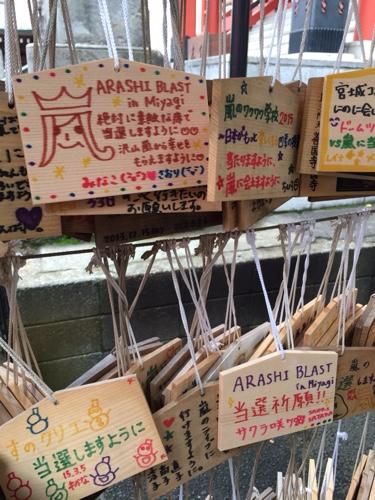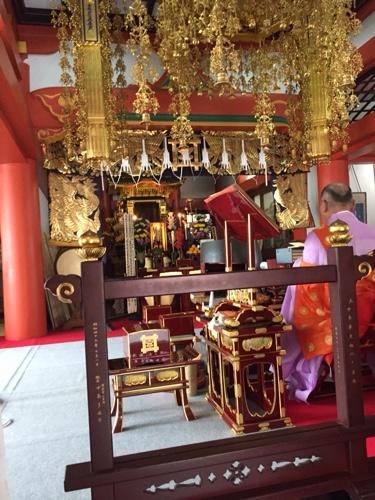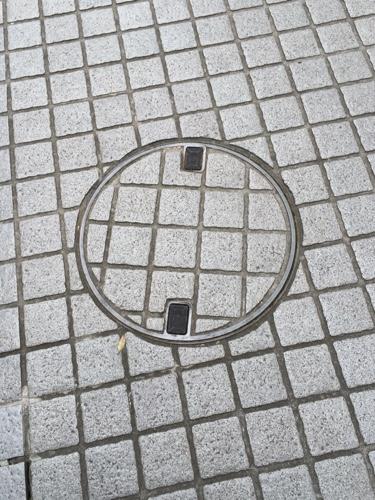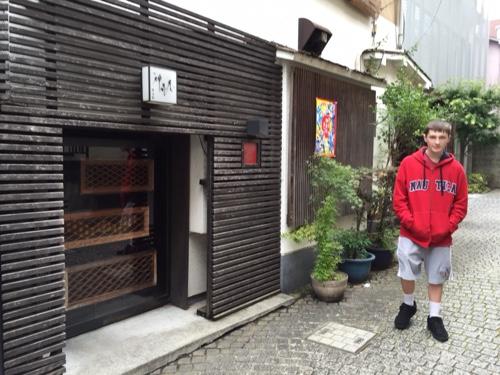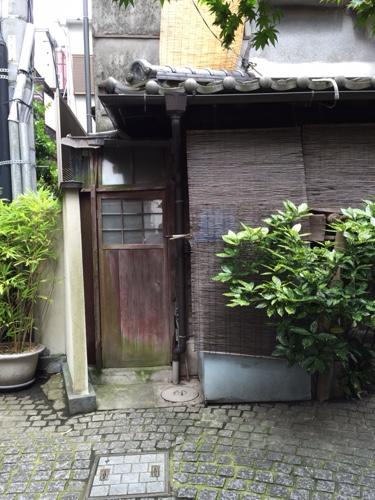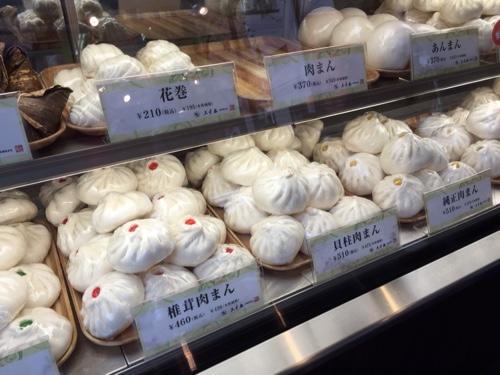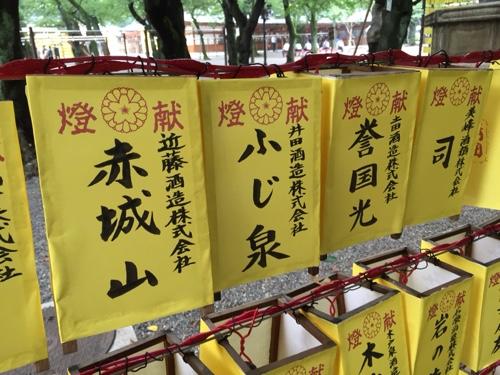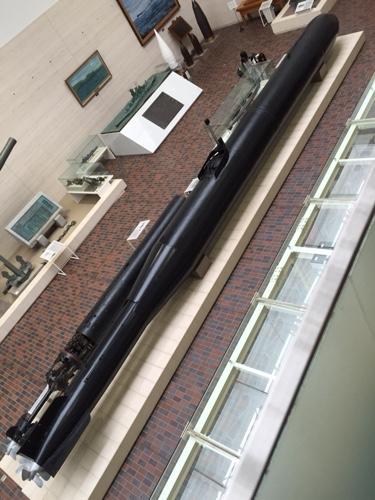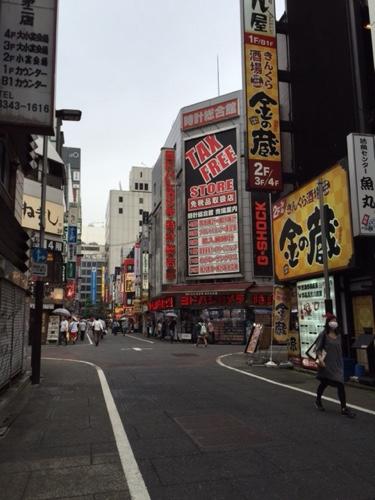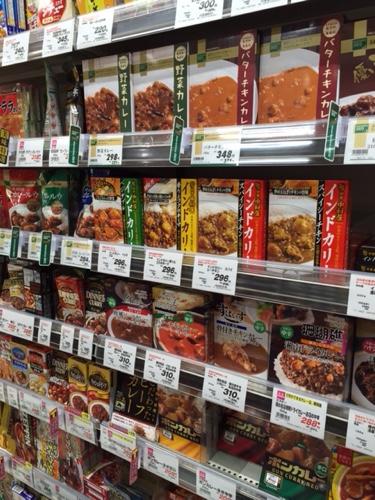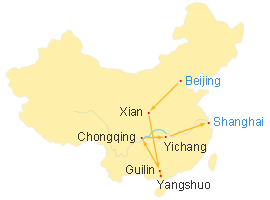The Great Wave off Kanagawa (神奈川沖浪裏 Kanagawa Oki Nami Ura?, “In the well of a wave off Kanagawa”), also known as The Great Wave or simply The Wave, is a woodblock print by the Japanese ukiyo-e artist Hokusai. It was published sometime between 1830 and 1833[1] in the late Edo period as the first print in Hokusai’s series Thirty-six Views of Mount Fuji (富嶽三十六景 Fugaku sanjūrokkei?). It is Hokusai’s most famous work, and one of the best recognized works of Japanese art in the world. It depicts an enormous wave threatening boats off the coast of the prefecture of Kanagawa. While sometimes assumed to be a tsunami, the wave is, as the picture’s title suggests, more likely to be a large rogue wave or okinami (“wave of the open sea”).[2] As in all the prints in the series, it depicts the area around Mount Fuji under particular conditions, and the mountain itself appears in the background.
Copies of the print are in many Western collections, including the Metropolitan Museum of Art in New York City, the British Museum in London, the Art Institute of Chicago, LACMA in Los Angeles, the National Gallery of Victoria in Melbourne,[3] and in Claude Monet’s house in Giverny, France, amongst many other collections.
This is Mr K’s favourite piece of art. Which is by way of saying, it’s the only piece of art he has ever been interested in or appears to enjoy, because well… as loathe as I am to admit he – the poor sod has no genuine appreciation for art in general, whatsoever. Such a sad miserable artless life Mr K does live. 
 So back up a few years to Mr K’s first trip to the MET in New York… he was excited to think he was going to be able to see The Great Wave on display. Wandered the galleries, wandered some more galleries – but alas, no Great Wave. After much wailing and gnashing of teeth, he eventually resorted to asking for directions to the piece, but was told that it was a very delicate object and is not currently on display. Naturally Mr K was disappointed to miss out..
So back up a few years to Mr K’s first trip to the MET in New York… he was excited to think he was going to be able to see The Great Wave on display. Wandered the galleries, wandered some more galleries – but alas, no Great Wave. After much wailing and gnashing of teeth, he eventually resorted to asking for directions to the piece, but was told that it was a very delicate object and is not currently on display. Naturally Mr K was disappointed to miss out..
After that trip, he came home and researched and found out that the National Gallery of Victoria has a copy of this magnificent woodblock print, and he felt this would be an excellent thing as his work takes him to Melbourne semi-regularly. However, each and every time he has found himself in Melbourne for work, ‘We are sorry, sir, but that item is not on display.’ and he has missed out again. Shit and bugger, Mr K has been repeatedly thwarted and disappointed in his efforts to see it in Melbourne.
Last year in March 2014 – off to NYC again, this time with me! And I drag him all over all the MET galleries, at some point he abandons me for the New York Transport museum which is way downtown and I’m still wandering the MET. We are pretty sure it’s not out, but ask around anyway, and yet again – no, the Great Wave is not on display at this time either, however we are happy to keep flogging merchandise featuring the image of the Great Wave on tote bags, pencil cases, coffee mugs and umbrellas, in the gift shop! 

 A couple of weeks later we are at the Boston Museum of Fine Arts and I stumble on some notepaper featuring the Great Wave in the MFA gift shop and ask the staff why they have items featuring the Great Wave… the response, “Well, the MFA has a copy of that woodblock print so we have stuff with the Great Wave all over it, but it’s not on display at the moment because it’s really old and fragile.” The look on Mr K’s face is priceless… waves, waves, everywhere, but nary an original to be seen. He’s getting seriously annoyed by this time, well as seriously annoyed as your average Canadian gets!
A couple of weeks later we are at the Boston Museum of Fine Arts and I stumble on some notepaper featuring the Great Wave in the MFA gift shop and ask the staff why they have items featuring the Great Wave… the response, “Well, the MFA has a copy of that woodblock print so we have stuff with the Great Wave all over it, but it’s not on display at the moment because it’s really old and fragile.” The look on Mr K’s face is priceless… waves, waves, everywhere, but nary an original to be seen. He’s getting seriously annoyed by this time, well as seriously annoyed as your average Canadian gets!
 At some point in amongst all this Mr K reads a news article detailing how there was a large set of Hokusai’s original prints from the ‘Views of Mt Fuji’ series, in the Wellness Spa of the Costa Concordia, which some drunken cruise liner captain sailed aground on January 13th, 2012 in an ill conceived game of high stakes chicken with an island off Italy. The tragedy of it all… Mr K is lamenting his poor decision to not have been born sole heir to an enormous coal mining fortune; for if he had, he claims he would have purchased a copy of it himself by now, and have it on loan to the modest Queensland Art Gallery so he could enjoy it whenever he wanted. Such determination to see this one piece of art!
At some point in amongst all this Mr K reads a news article detailing how there was a large set of Hokusai’s original prints from the ‘Views of Mt Fuji’ series, in the Wellness Spa of the Costa Concordia, which some drunken cruise liner captain sailed aground on January 13th, 2012 in an ill conceived game of high stakes chicken with an island off Italy. The tragedy of it all… Mr K is lamenting his poor decision to not have been born sole heir to an enormous coal mining fortune; for if he had, he claims he would have purchased a copy of it himself by now, and have it on loan to the modest Queensland Art Gallery so he could enjoy it whenever he wanted. Such determination to see this one piece of art!
So here we are, 2014 and the planning begins for a trip to Japan. Mr K is convinced he will finally see a copy of his beloved Great Wave off Kanagawa somewhere in Japan. So he starts doing his research on every art museum he can find in all the cities and towns we are going to be visiting. Without fail, every single one of them comes up empty… not a single copy of this artwork can be found listed as on display in any of the major art museums of Japan! Mr K is very disappointed – yet again. Which brings us up to date – when two days ago, we were shopping in Kagurazaka and I see the now ubiquitous, Great Wave on a fan…
 Naturally, I decide that I really should buy one, (which gains me a growl of indignation from Mr K) and just on spec while the sales assistant is ringing up my purchase and wrapping up my new fan, I decide to ask him 1) does he speak English, and upon affirmation that yes he does a little, 2) does he know where we can go to see this piece of art? Well, off the top of his head, he doesn’t know… but he turns to his computer and starts searching the internet for us. On all the Japanese websites that we can’t read and English Google doesn’t deal with so well. In a few moments, he turns back to us and starts writing down an address for the Ota Memorial Museum of Art, and tells us that it looks like they have a copy on display. Mr K is watching this exchange with increasing interest until eventually he walks out of the store with a huge grin and a piece of paper that will lead him to the promised Great Wave.
Naturally, I decide that I really should buy one, (which gains me a growl of indignation from Mr K) and just on spec while the sales assistant is ringing up my purchase and wrapping up my new fan, I decide to ask him 1) does he speak English, and upon affirmation that yes he does a little, 2) does he know where we can go to see this piece of art? Well, off the top of his head, he doesn’t know… but he turns to his computer and starts searching the internet for us. On all the Japanese websites that we can’t read and English Google doesn’t deal with so well. In a few moments, he turns back to us and starts writing down an address for the Ota Memorial Museum of Art, and tells us that it looks like they have a copy on display. Mr K is watching this exchange with increasing interest until eventually he walks out of the store with a huge grin and a piece of paper that will lead him to the promised Great Wave.
We head off to the war museum and shrine as planned, stop for some lunch and then head to the Ota Memorial Museum of Art. A bit of a walk, a couple of trains and subway stops later and we arrive at the museum… only to discover this:
 For those of us who don’t speak Japanese, myself included, this poster tells us that the piece in question will be on display from the 1st of August until the 27th of September 2015. Well, as luck would have it, we are back from our cruise on Monday the 3rd of August and have the whole day free before we fly out for China at stupid o’clock on Tuesday the 4th of August… those of you who ‘museum’ a lot, can probably feel what is coming next. Yes, that is right. The Ota Memorial Museum is CLOSED ON MONDAYS is the great tradition of museums the world over. At this point all decorum is lost and Mr K is pouting like a small child who has just been told he can ride the pony and see the clowns, but at the last moment is sent to bed. Oh, the complete lack of comprehension at such bad luck expressed by someone normally in possession of a Parking Fairy, it’d be hilarious if it weren’t so ridiculous by now.
For those of us who don’t speak Japanese, myself included, this poster tells us that the piece in question will be on display from the 1st of August until the 27th of September 2015. Well, as luck would have it, we are back from our cruise on Monday the 3rd of August and have the whole day free before we fly out for China at stupid o’clock on Tuesday the 4th of August… those of you who ‘museum’ a lot, can probably feel what is coming next. Yes, that is right. The Ota Memorial Museum is CLOSED ON MONDAYS is the great tradition of museums the world over. At this point all decorum is lost and Mr K is pouting like a small child who has just been told he can ride the pony and see the clowns, but at the last moment is sent to bed. Oh, the complete lack of comprehension at such bad luck expressed by someone normally in possession of a Parking Fairy, it’d be hilarious if it weren’t so ridiculous by now.
So poor Mr K is thwarted yet again… and to absolutely and finally rub salt into the wound, the Metropolitan Museum of Art is holding celebrations to commemorate the centennial of their Asian Collections later this year, and I am going to be there to see it, but Mr K will not be with me.
 After all the chasing and research that has gone into finding a copy of this woodblock print on display, I would actually like to see the piece as well… but there is a little part of me, thinking – perhaps I should avoid it at the MET in September, so that we can continue to hunt for it together.
After all the chasing and research that has gone into finding a copy of this woodblock print on display, I would actually like to see the piece as well… but there is a little part of me, thinking – perhaps I should avoid it at the MET in September, so that we can continue to hunt for it together.


















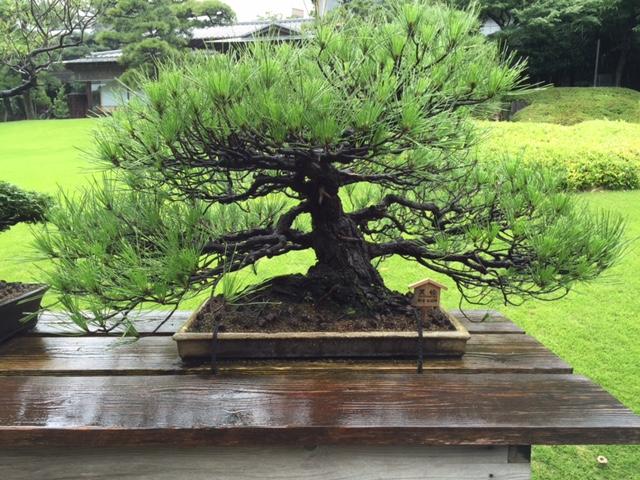











 This is the imposing gravel pathway leading up to the lookout for the Imperial Palace in the middle of the East Gardens, and over the other side of the Uchibori-dori Ave is Shinjuku, which was largely bought up by Mitsubishi a few decades ago and now sells for USD$270,000 per square meter. That’s right – over there real estate is worth a small fortune, the seemingly unused gravel parade ground? Driveway? Mall-that-looks-like-th-Washington-Mall-without-any-monuments? is just laying around doing nothing but providing an impressive walk way for tourists on real estate worth the equivalent of some medium sized African nation’s GDP! Wow… but I did find the guy who has Tokyo’s worst job ever. This dude appears to be raking all these acres of gravel by himself, and the inconsiderate tourists who were running all through it to get the right spots for their photos didn’t even seem to notice this poor guy coming along after them smoothing out their footprints. Crazy.
This is the imposing gravel pathway leading up to the lookout for the Imperial Palace in the middle of the East Gardens, and over the other side of the Uchibori-dori Ave is Shinjuku, which was largely bought up by Mitsubishi a few decades ago and now sells for USD$270,000 per square meter. That’s right – over there real estate is worth a small fortune, the seemingly unused gravel parade ground? Driveway? Mall-that-looks-like-th-Washington-Mall-without-any-monuments? is just laying around doing nothing but providing an impressive walk way for tourists on real estate worth the equivalent of some medium sized African nation’s GDP! Wow… but I did find the guy who has Tokyo’s worst job ever. This dude appears to be raking all these acres of gravel by himself, and the inconsiderate tourists who were running all through it to get the right spots for their photos didn’t even seem to notice this poor guy coming along after them smoothing out their footprints. Crazy. 












